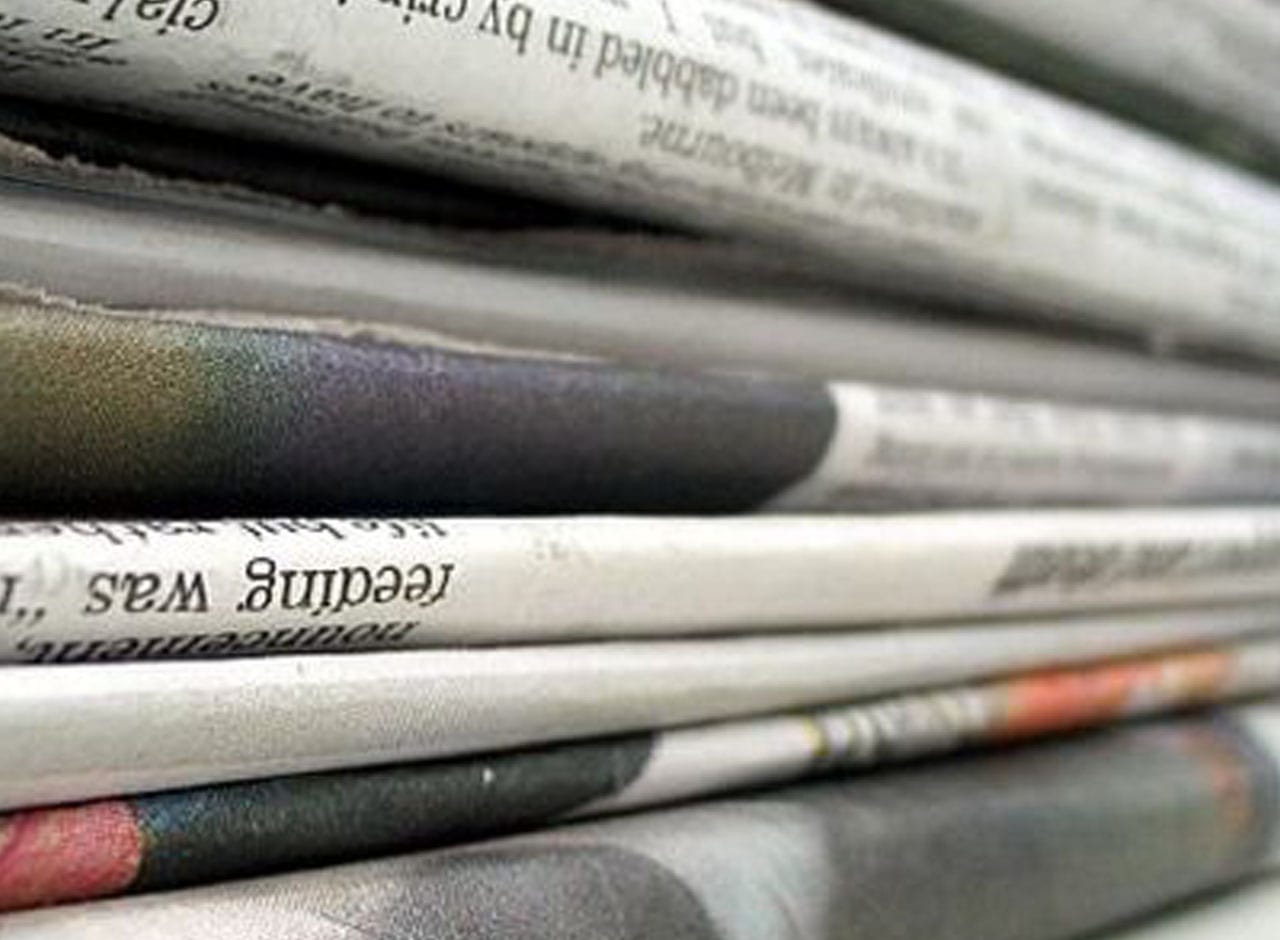As the world is ceased with trying to find a lasting solution against the deadly coronavirus (code-named COVID-19), the media industry in particular has been negatively affected by the state of disaster (emergence) and locked down measures put in place by governments across the globe.
All of sudden the oxygen of the [print] media industry, which includes advertising, events and newspaper sales, have been extinguished. Some corporates have moved in quickly to suspend or even terminate their advertising contracts during the lockdown period. Others have had to move their adverts to platform companies and online newspapers in anticipation of more eyeballs in those spaces during the period of social distancing and self-quarantine.
Our street newspaper vending stalls in urban areas and growth points are deserted as people attempt to preserve their precious lives. In order to get up to date information and news on the unfolding pandemic most of the audiences have had to spend countless hours binge-watching television, listening to radio stations and scrolling up and down websites and social media platforms. Inevitably, the politics of the remote control (between parents and children) have certainly dominated some of their household conflicts during this lockdown period. No wonder why cases of gender-based violence have shot up.
Besides having access to uninterrupted satellite television network, affordable and accessible internet connection has become a priceless service to have in order to get information and news in real time. All this points to the changing dynamics in terms of news consumption in the era of COVID-19. Some of these apparent changes to the distribution and business models of the print media industry are not new.
The sector has been constantly buffeted by the winds of technological change for several decades. In response, some newspapers and magazines have begun to embrace digital and mobile first strategies as part of their coping mechanisms. In some African countries, the print media sector has migrated to the online sphere, thereby giving rise to what we call a ‘hybrid content distribution model’ (circulation of hard and soft copies).
The unfortunate part of this ‘digital turn’ is that most newspapers and magazines in Africa have latched on to the online space without any tangible domesticated or even context-specific monetisation strategy. If any, most media organisations have rolled out copy and paste strategies borrowed from the developed world. Consequently, some of them have lost a fortune in these short-lived digital and mobile first experiments.
The print media has been heavily affected at the organizational, professional and personal levels by the COVID-19 induced economic slowdown. Companies are being forced to decide on how best to keep the lights on. Some have chosen the route of cutting salaries across the board while others have laid off staff. Still for most media organisations home-working has become the ‘new normal’ as staff are allowed to report live from the bedrooms, kitchens and gardens. These are all drastic measures necessitated by an unforeseen global pandemic.
In Southern Africa, the print media has been surviving on shoe-string advertising budgets for a number of years now owing to the economic downturn, changing news consumption patterns and increased competition from platform companies. Several publications have been struggling to pay rentals and their employees a living wage on time.
Thus, the disruptive impact of COVID-19 has come at a time when the print media sector is already on its knees. It therefore does not need rocket science to speculate that the COVID-19 induced economic downturn will leave some private media companies worse off when compared to state-owned media companies which relies on government subsidies.
In South Africa, the Mail and Guardian in South Africa has reported that since January this year they have received little advertising revenue to meet their regular commitments. For a company where advertising revenue accounts for 70% of the total income; a partial or total lockdown was bound to leave its balance sheet in a precarious position. Most of their clients have cancelled their campaigns while live events which accounts for 30% of their revenue has also been affected.
The global pandemic has pushed the media organisation to implement radical costing cutting measures as a way of sustaining their operations in the short to medium term. The Mail and Guardian has called on their loyal audiences to buy the newspaper whenever they have a chance to do their shopping during lockdown period.
It is in the public interest that trustworthy and independent media are supported during this tumultuous time in order for them to continue with their duty to provide credible and quality journalism. Audiences require fact-checked information in times like these where infodemic and disinfodemic have become the order of the day especially on social media.
But for mainstream media to survive this crisis period there is urgent need to rethink existing distribution and business models especially in the print media sector. This will undoubtedly require thinking without the box, reconfiguration of traditional canvas models and monetisation of online content.
This also entails thinking beyond internationalized responses to digital disruption such as erecting paywalls on our websites, membership packages and subscriptions. Given the slow penetration of credit card culture and a general lack of financial savings in Southern Africa, online payments for news have proven to be a difficult proposition. However, for countries like Zimbabwe, which has experienced the shortage of cash for close to five years can take advantage of mobile payment solutions like Ecocash, OneMoney and Telecash to sell their news content.
In this regard, media organisations must find creative ways of harnessing these mobile payment platforms so that they can leverage on it. This may entail forging strategic partnerships with telecommunications companies and mobile payment service providers. It can also involve reaching out to credible financial institutions for mutually beneficial partnerships.
During the lockdown period, we have also witnessed a trend where print media organisations are sending soft copies in PDF format to their readers as a way of maintaining the reading culture but also promoting their brands. Others have launched WhatsApp groups for sharing real-time information and updates on COVID-19 and other related health tips.
Other newspapers in the region are using platforms like Flipsnak which allow publishers to create interactive newspapers, brochures and magazines online. The major headache for publishers however has centred around how to monetise and distribute the content.
This partly speaks to the evolution of content distribution models. As the print media adopts and popularises the digital copy, it has become very imperative for them to link their content distribution strategies to the overarching business models. There is a saying which says ‘necessity is the mother of invention’. It is thus necessary for print organisations to look closely at their content distribution strategies knowing fully well that this may well be the ‘new normal’ going forward.
So what needs to be done?
A crisis of any kind provides media organisations with an opportunity to reflect, re-strategise and implement context-specific interventions. One of the structural weaknesses of media companies in Southern Africa is the absence of research and development (R & D) departments within their organisational structures. Such a department is important for evidence-based decision making, piloting local-specific interventions and the designing of apps suited to our media environments.
Our recent study on analytic systems used by African newsrooms revealed that most of them rely on Google Analytics, Facebook Insights and Cheatbeat yet there is more that can be gained by investing in the development and deployment of domestic systems and apps to gauge the mood of your readers.
A shift towards online news consumption during this global pandemic provides print media organisations with an opportunity to refine their income generation models and audience retention strategies. Thus, a proactive R & D department should be in a position to use editorial metrics and data collection from online traffic to boost the financial base of the company.
This is no longer time for media companies to put all their eggs in one basket but looking at ways of multiplying income generation streams. In my Media Entrepreneurship class at the Namibia University of Science and Technology, I often emphasize the need for students to appreciate the basic elements of the business canvas model. We also spend a lot of time discussing about the importance of implementing multiple revenue streams. Locally-specific interventions like mobile news packages, partial paywalls and sponsored events are some of the options that can be explored by media companies in Southern Africa in order to ring-fence themselves against COVID-19 induced bankruptcy.
However, these strategies must be informed by a clear understanding of your value proposition, customer relationships and segmentation, key partners and distribution channels. Failure to think critically about these issues often result in short-sighted and half-backed interventions.
There is also need for a media development fund to be created by organisations working in the media sector like Luminate, International Media Support, HIVOS and OSISA in the short to medium term to guard against the anticipated closure of private media companies in the post-COVID-19 world.
Admire Mare is Senior Lecturer in the Department of Communication at the Namibia University of Science and Technology. The views expressed here are his personal thoughts.





